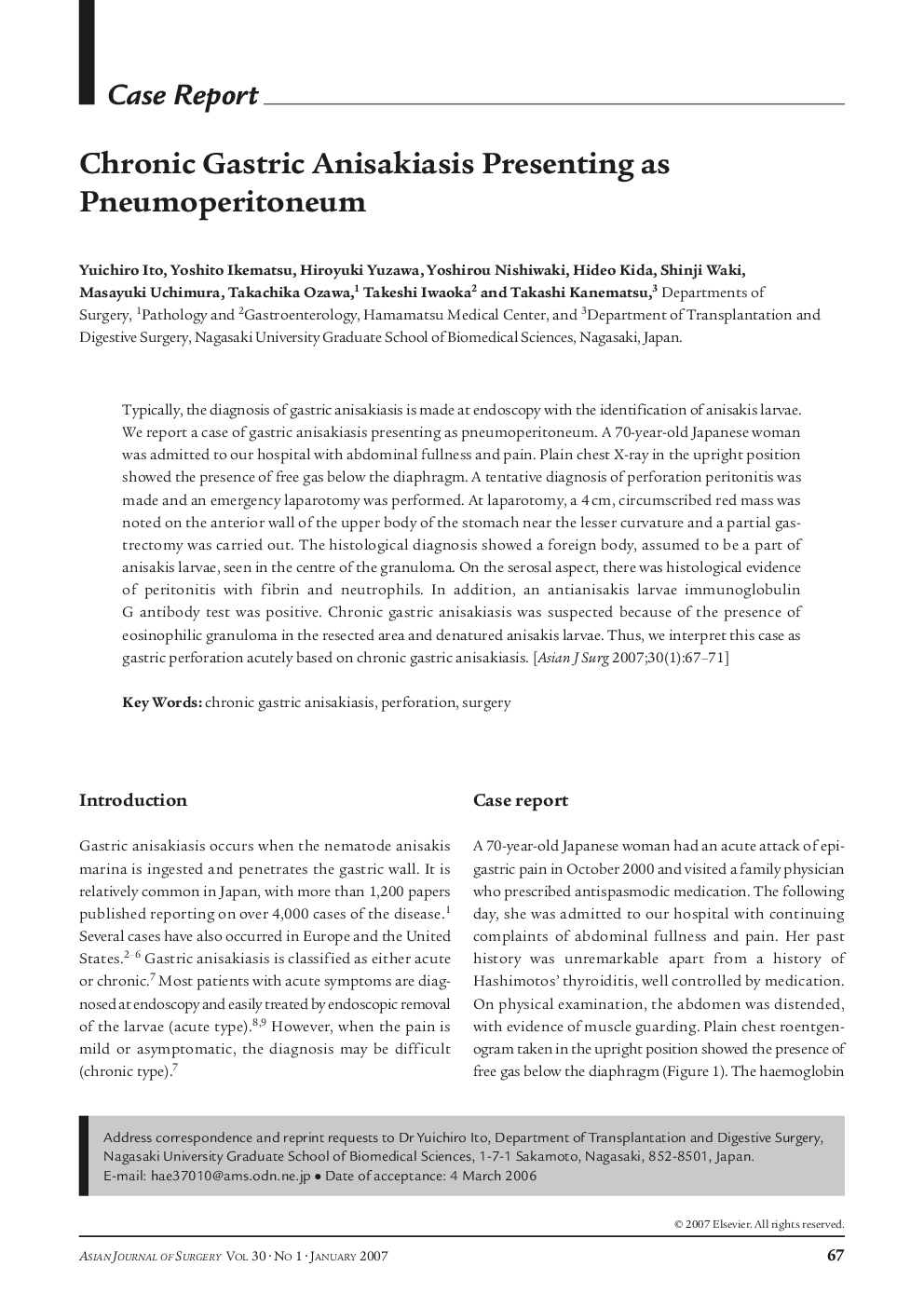| Article ID | Journal | Published Year | Pages | File Type |
|---|---|---|---|---|
| 4282970 | Asian Journal of Surgery | 2007 | 5 Pages |
Typically, the diagnosis of gastric anisakiasis is made at endoscopy with the identification of anisakis larvae. We report a case of gastric anisakiasis presenting as pneumoperitoneum. A 70-year-old Japanese woman was admitted to our hospital with abdominal fullness and pain. Plain chest X-ray in the upright position showed the presence of free gas below the diaphragm. A tentative diagnosis of perforation peritonitis was made and an emergency laparotomy was performed. At laparotomy, a 4 cm, circumscribed red mass was noted on the anterior wall of the upper body of the stomach near the lesser curvature and a partial gastrectomy was carried out. The histological diagnosis showed a foreign body, assumed to be a part of anisakis larvae, seen in the centre of the granuloma. On the serosal aspect, there was histological evidence of peritonitis with fibrin and neutrophils. In addition, an antianisakis larvae immunoglobulin G antibody test was positive. Chronic gastric anisakiasis was suspected because of the presence of eosinophilic granuloma in the resected area and denatured anisakis larvae. Thus, we interpret this case as gastric perforation acutely based on chronic gastric anisakiasis.
